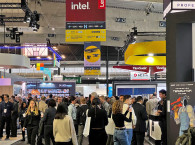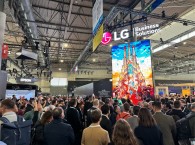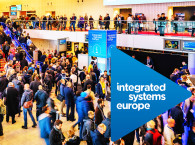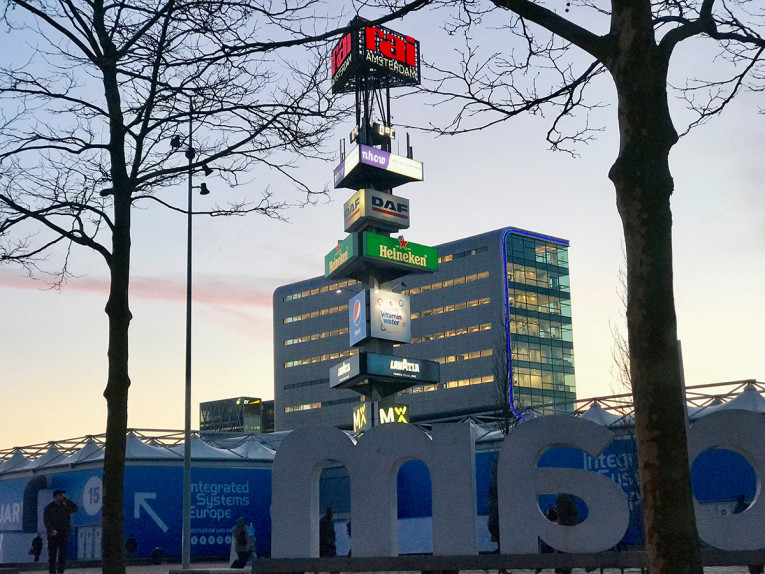
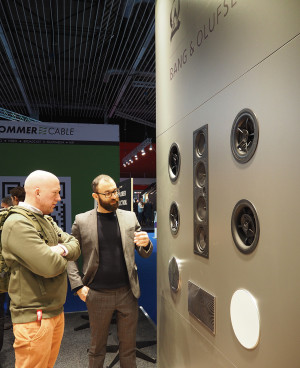
partnership continues to expand for custom
integration.
Apart from the display technologies and digital signage massive exhibits, at ISE we can find interesting perspectives in terms of audio processing, beam-forming speaker arrays, networking, and the optimized use of the latest speaker drivers and technologies, not forgetting the always evolving control solutions.
Perhaps one of the most surprising trends at ISE 2018 is directly related to voice and has to do with a new reenergized Unified Communications and Collaboration (UC&C) segment, now focused on small and medium conference/meeting rooms, workspaces, and huddle rooms. The topic merits a dedicated report, but I wanted to point it out as one of the key show highlights - and I would mention once again the innovation that is being introduced by collaboration-solutions company Nureva, which is doing for audio conferencing technology what smart speakers are doing to home audio. Read the story here.
Apart from some established players in the UC&C segment, there was a significant number of companies presenting new solutions designed to transform workspaces with enhanced collaboration and facilities management. We've noticed that small to large companies all are entering - or reentering - the segment with new, simplified, UC&C solutions. And related or unrelated with communication and new acoustic spaces, companies are also exploring how to use the latest sound technologies to create new immersive experiences outside of the traditional concepts.
At ISE 2018, we've seen a number of interesting approaches to integrated sound and acoustics installations. Plantronics was promoting its unique and groundbreaking "office" workspace approach introduced in the fully integrated Habitat Soundscaping system, which includes software that connects and controls speakers, sensors, acoustic treatment solutions, and visual displays to ensure natural harmony within working spaces. An approach based on extensive research on intelligibility, sound masking, and the latest trends in open offices and workspaces, taking into account all the known disciplines, combined with an interesting new take in soundscaping.
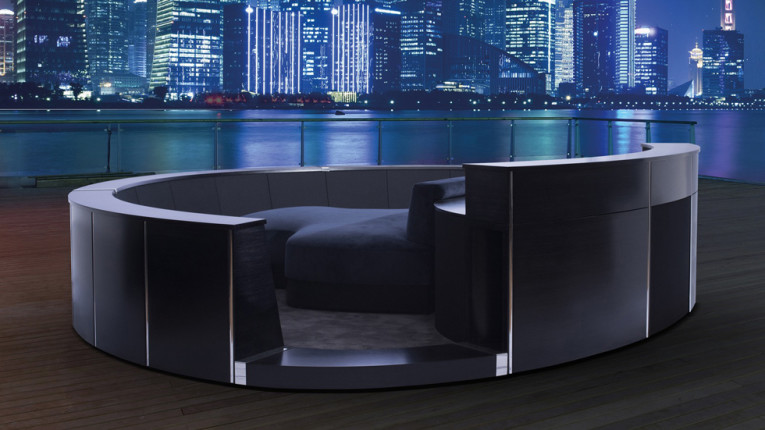
Sony was also showing a new spatial audio array technology, Sonic Surf VR, which the company says was designed to allow people to dive into "a virtual sea of sounds." The concept combines newly designed multi-channel speakers and specially developed software that enables creators to design "popping, moving, and partitioning sounds in one space," creating an interactive experience "where sounds appear to move around by themselves." Sony says that Sonic Surf VR is suitable for a wide spectrum of applications such as theme parks, exhibitions and museums, aquariums, and corporate showrooms.
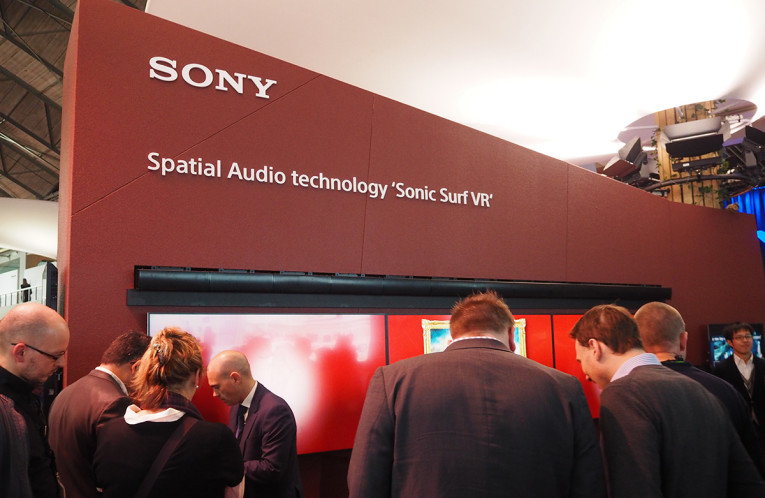
Another trend is a new concept of "immersive" sound for installations and events. d&b audiotechnik is betting on expanding the sound integration concept with d&b Soundscape, a solution that combines d&b loudspeaker systems, a new networked (Dante) audio system processor and two software modules to allow sound experiences with object-based mixing and sophisticated room emulation. d&b Soundscape is described as "a toolkit to enable the creation of an unparalleled listening experience - natural, harmonious, enveloping and emotionally engaging." Like the L-Acoustics L-ISA concept, d&b Soundscape was designed as a new direction that seems to be in line with the proposed Sennheiser AMBEO concept, and could probably also be explored by Meyer Sound, with the evolution of virtual acoustics, pioneered in the company's Constellation system.
I thought these references would serve as an interesting teaser to more in-depth articles that we intend to include in the magazine very soon. And since there's hardly been any time to digest all that was presented in the shows we've attended, I also thought it would be appropriate to revisit one of the things I wrote a year ago on this occasion. Contrary to some industry analysts, I like to revisit my own takes on industry trends and market predictions, revalue the consistency of my reports and, eventually correct distorted views.
For Integrated Systems Europe (ISE) 2017, last year, I wrote a piece for the ISE Daily, entitled "User Interfaces: Voice Personal Assistants Disrupting Integration Concepts," on which I compared what's happening with the introduction of voice interfaces with what happened at ISE 2011, the year Apple launched the iPad, a fairly expensive device for consumers but a real bargain for integrators, considering the technology that was included and the fact that it could replace the typical $3,000 touch panels.
And the iPad - and subsequently also the iPhone and smartphones in general - completely disrupted the "user interface" for AV solutions, both on the commercial and residential sectors. For the first time, the Bring your Own Device concept was at the core of the installation and the smart home and the focus for systems integration was no longer in the platform itself but on the way the "control" software could interface with the user, gradually becoming completely transparent. The business for Crestron, Extron, and AMX, was never the same and even though the industry tried to integrate with the more generic "tablet" concept, the truth is Apple's powerful ecosystem of hardware, software, apps and services remained inescapable and completely changed the paradigm for the AV industry.

Funny enough, at ISE 2018, while there are no new significant trends to report on the use of voice recognition as a user interface, it seems that the "touch-screen" trend evolved and we now have both the iPads still going strong as controllers, but also the return of dedicated touch-screen controllers, mostly simply based on cheap, Android-based devices that apparently, as manufacturers explain, users don't tend to divert or take away as they do with Apple's devices. And because of that, the number of companies selling "secure" iPad frames, also continues to increase.
Related to the increase in the number of UC&C solutions, as we've mentioned, there's also Microsoft selling "Surfaces", as the main tactile interface for workspaces and huddle rooms - which is naturally related with the company's dominance in that market, with Office 365 and Skype. Funny enough, I heard very little about Apple HomeKit or Google Home at ISE 2018, which means integration and control systems companies still prefer to ignore how smart home automation is being commoditized - as anyone attending CES know. I wonder if any of the companies selling dedicated touch-screen controllers actually realize how important the use of these devices is for consumers and learned the lessons from the iPad? How they could actually influence the integration industry as much (or more) as voice control?






